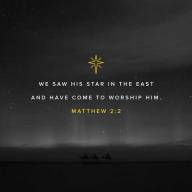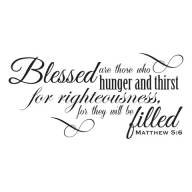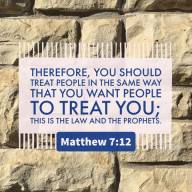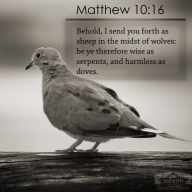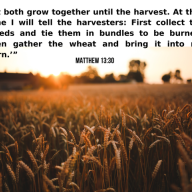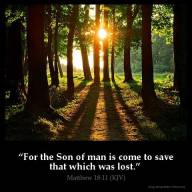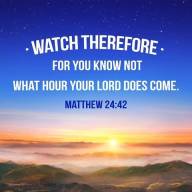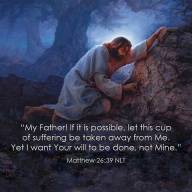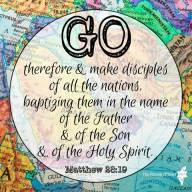- Kingdom of
Heaven
- Fulfillment of
the Old Testament
- Jesus
- Discipleship and
the Church
- Conflict and
Judgment
- Compassion and
Healing
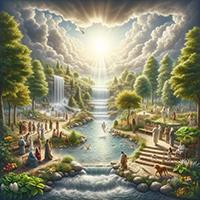
A central theme in the Gospel of Matthew is the "Kingdom of Heaven," a term unique to this Gospel. Matthew uses it to describe both a present reality and a future hope. Jesus' teachings, parables, and miracles are often aimed at revealing the nature of this kingdom. It's portrayed as a realm where God's will is done perfectly, contrasting with the flawed earthly kingdoms. This theme underscores the transformative nature of Jesus' message and the radical reordering of societal and religious values it implies.
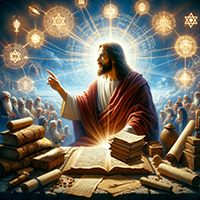 Matthew frequently emphasizes Jesus as the fulfillment of Old Testament prophecies, establishing him as the long-awaited Messiah. This is evident right from the genealogy in the opening chapter, linking Jesus to Abraham and David, and through numerous "fulfillment citations" scattered throughout the text. By consistently referencing Hebrew scriptures, Matthew seeks to demonstrate to his Jewish audience that Jesus' life and mission were in accordance with God's established plan.
Matthew frequently emphasizes Jesus as the fulfillment of Old Testament prophecies, establishing him as the long-awaited Messiah. This is evident right from the genealogy in the opening chapter, linking Jesus to Abraham and David, and through numerous "fulfillment citations" scattered throughout the text. By consistently referencing Hebrew scriptures, Matthew seeks to demonstrate to his Jewish audience that Jesus' life and mission were in accordance with God's established plan.
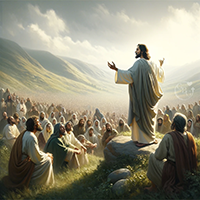 The Gospel presents Jesus as a figure akin to Moses. This is most clearly seen in the Sermon on the Mount, which parallels Moses receiving the Ten Commandments on Mount Sinai. Through such parallels, Matthew portrays Jesus as the ultimate lawgiver, providing a new interpretation of the law that focuses on inner righteousness and moral integrity, transcending the literal observance of the law.
The Gospel presents Jesus as a figure akin to Moses. This is most clearly seen in the Sermon on the Mount, which parallels Moses receiving the Ten Commandments on Mount Sinai. Through such parallels, Matthew portrays Jesus as the ultimate lawgiver, providing a new interpretation of the law that focuses on inner righteousness and moral integrity, transcending the literal observance of the law.
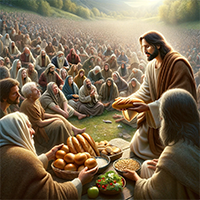 Matthew's Gospel places significant emphasis on the theme of discipleship and the role of the church. It provides explicit instructions on the conduct, mission, and ethical standards expected of Jesus' followers. The Gospel also lays foundational teachings regarding the structure and authority of the church, highlighting issues of community, forgiveness, and the handling of conflict within the Christian community.
Matthew's Gospel places significant emphasis on the theme of discipleship and the role of the church. It provides explicit instructions on the conduct, mission, and ethical standards expected of Jesus' followers. The Gospel also lays foundational teachings regarding the structure and authority of the church, highlighting issues of community, forgiveness, and the handling of conflict within the Christian community.
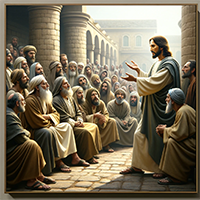 A recurring theme in Matthew is the conflict between Jesus and the religious authorities of his time, which eventually leads to his crucifixion. The Gospel does not shy away from depicting the opposition Jesus faced from the Pharisees and Sadducees, often highlighting their hypocrisy and legalism. This conflict extends to a broader theme of divine judgment, where the Gospel emphasizes that genuine faith and ethical living, rather than mere ritual observance, are necessary to enter the Kingdom of Heaven.
A recurring theme in Matthew is the conflict between Jesus and the religious authorities of his time, which eventually leads to his crucifixion. The Gospel does not shy away from depicting the opposition Jesus faced from the Pharisees and Sadducees, often highlighting their hypocrisy and legalism. This conflict extends to a broader theme of divine judgment, where the Gospel emphasizes that genuine faith and ethical living, rather than mere ritual observance, are necessary to enter the Kingdom of Heaven.
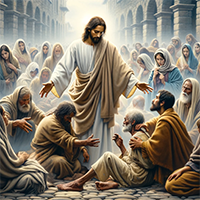 Throughout Matthew, Jesus' compassion towards the marginalized and suffering is prominently featured. The Gospel recounts numerous instances of Jesus healing the sick, feeding the hungry, and showing mercy to sinners. This theme not only underscores the miraculous power of Jesus but also his deep concern for the physical and spiritual well-being of individuals, especially those overlooked or oppressed by society.
Throughout Matthew, Jesus' compassion towards the marginalized and suffering is prominently featured. The Gospel recounts numerous instances of Jesus healing the sick, feeding the hungry, and showing mercy to sinners. This theme not only underscores the miraculous power of Jesus but also his deep concern for the physical and spiritual well-being of individuals, especially those overlooked or oppressed by society.
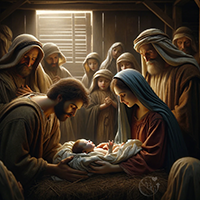
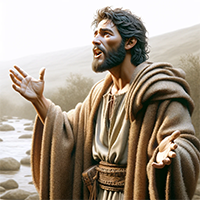 John the Baptist's ministry in the wilderness, preaching repentance and baptizing, sets the stage for Jesus' public ministry. Jesus is baptized by John in the Jordan River, marking the beginning of His mission.
John the Baptist's ministry in the wilderness, preaching repentance and baptizing, sets the stage for Jesus' public ministry. Jesus is baptized by John in the Jordan River, marking the beginning of His mission.
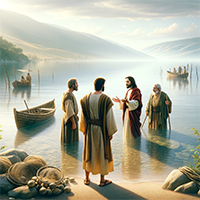 Jesus begins His public ministry in Galilee, preaching the message of repentance and the Kingdom of Heaven. He calls His first disciples - Simon Peter, Andrew, James, and John. This period includes numerous miracles, teachings, and parables, such as the Sermon on the Mount, which includes the Beatitudes, and teachings about love, forgiveness, and trust in God.
Jesus begins His public ministry in Galilee, preaching the message of repentance and the Kingdom of Heaven. He calls His first disciples - Simon Peter, Andrew, James, and John. This period includes numerous miracles, teachings, and parables, such as the Sermon on the Mount, which includes the Beatitudes, and teachings about love, forgiveness, and trust in God.
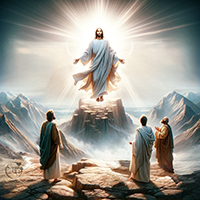 A recurring theme in Matthew is the conflict between Jesus and the religious authorities of his time, which eventually leads to his crucifixion. The Gospel does not shy away from depicting the opposition Jesus faced from the Pharisees and Sadducees, often highlighting their hypocrisy and legalism. This conflict extends to a broader theme of divine judgment, where the Gospel emphasizes that genuine faith and ethical living, rather than mere ritual observance, are necessary to enter the Kingdom of Heaven.
A recurring theme in Matthew is the conflict between Jesus and the religious authorities of his time, which eventually leads to his crucifixion. The Gospel does not shy away from depicting the opposition Jesus faced from the Pharisees and Sadducees, often highlighting their hypocrisy and legalism. This conflict extends to a broader theme of divine judgment, where the Gospel emphasizes that genuine faith and ethical living, rather than mere ritual observance, are necessary to enter the Kingdom of Heaven.
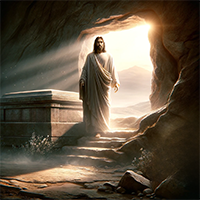 The discovery of the empty tomb and appearances of the resurrected Christ are the crowning events of the Gospel. They affirm Jesus' victory over death and His divine nature.
The discovery of the empty tomb and appearances of the resurrected Christ are the crowning events of the Gospel. They affirm Jesus' victory over death and His divine nature.
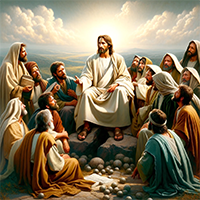 The discovery of the empty tomb and appearances of the resurrected Christ are the crowning events of the Gospel. They affirm Jesus' victory over death and His divine nature.
The discovery of the empty tomb and appearances of the resurrected Christ are the crowning events of the Gospel. They affirm Jesus' victory over death and His divine nature.
